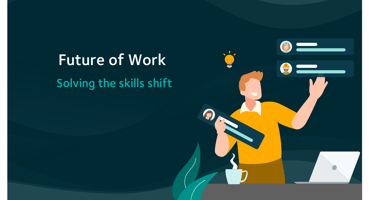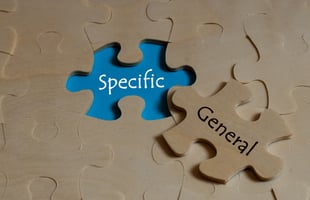Faethm’s recent Solving the Skills Shift webinar on strategic workforce planning brought together...
Workforce planning vs HR planning
Workforce planning is an emerging and highly sought after skill in the HR sector. Workforce planning is a strategic process that enables you to build a pipeline of future talent, assess what skills are needed in your workforce and then develop strategies for attracting, developing and retaining them. It's important to note however that workforce planning goes beyond just recruiting new employees; it also considers ways for organizations to develop their current employees' skills or provide training opportunities for those who don't have them yet.
Workforce planning is a term that is often used interchangeably with HR planning, but they are not the same thing
Workforce planning is a process of identifying future skills and labour needs, developing a plan to address them, and then carrying out that plan so that there is the right number of people with the right skills at the right time in your organization.
HR planning, on the other hand, includes activities such as performance management and employee relations. It's a set of tactical tools used to help an organization manage its people at present.
Workforce planning can be used as a strategic tool that helps companies stay ahead of changes in their local labour market—such as new legislation or advances in technology—by anticipating business needs well into the future.
Workforce planning goes beyond the responsibilities of HR and involves other departments within a company
Workforce planning is not just about HR. It’s a strategic process that involves many departments within an organization, including HR, finance, sales and marketing. The goal of workforce planning is to align the workforce with the business strategy.
Workforce planning goes beyond hiring new employees by looking at how current employees can be used more effectively and efficiently throughout their careers. Workforce planning also looks at which roles are needed for future growth and who will fill them.
HR and workforce planning are entirely different processes
HR planning is the process of managing resources to meet regulatory requirements, organisational requirements and business objectives. Workforce planning is about managing resources into the future in order to meet business objectives.
While HR planning focuses on creating a plan for getting the right skills to manage people at present, workforce planning focuses on how skills will be managed into the future, given new technology developments and a changing labour market
Workforce planning is a strategic process that helps organizations plan for talent management over the long term. It requires an understanding of demographic trends, such as aging populations or immigration patterns; technological changes that affect labor markets; and shifts in business strategy that affect skill needs. Workforce planners also consider whether there are enough skilled workers in certain industries (such as IT) or regions (such as Silicon Valley).
Workforce planning enables companies to stay ahead of changes in the labour market and technology so they can prepare for unexpected events, mark opportunities as they arise, justify their labour needs and ensure they have the right people with the right skills to meet business objectives.
Workforce planning is not just about the present, it is about the future. Organizations need to keep up with changes in the labour market and technology so they can prepare for unexpected events, mark opportunities as they arise, justify their labour needs and ensure they have the right people with the right skills to meet business objectives.
Workforce planning is a long-term process that should start several years before it's needed. It begins by identifying what capabilities or skills your organization needs now and projecting these into the future.
Workforce planning can give you an advantage over your competitors
Workforce planning is a way to stay ahead of the competition. It helps you manage your labour budget and costs, prepare for unexpected events and identify employees who need additional training to succeed in their roles.
When workforce planning is done well, it can give you an advantage over your competitors.
It’s true that workforce planning and HR are two different things, but they are also two sides of the same coin. It can be difficult to decide which one is more important, but it’s clear that both are necessary for any company looking to stay competitive in today's business world.



